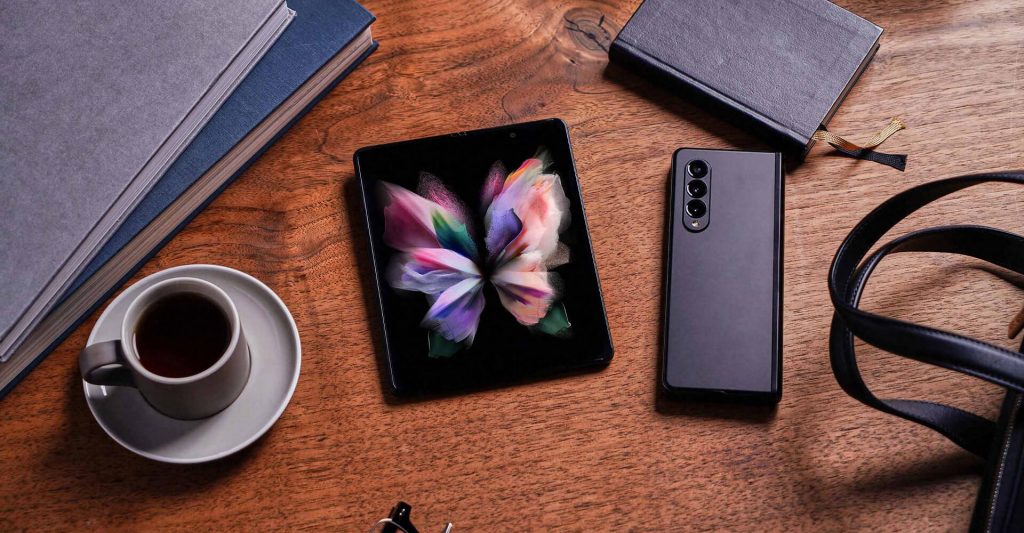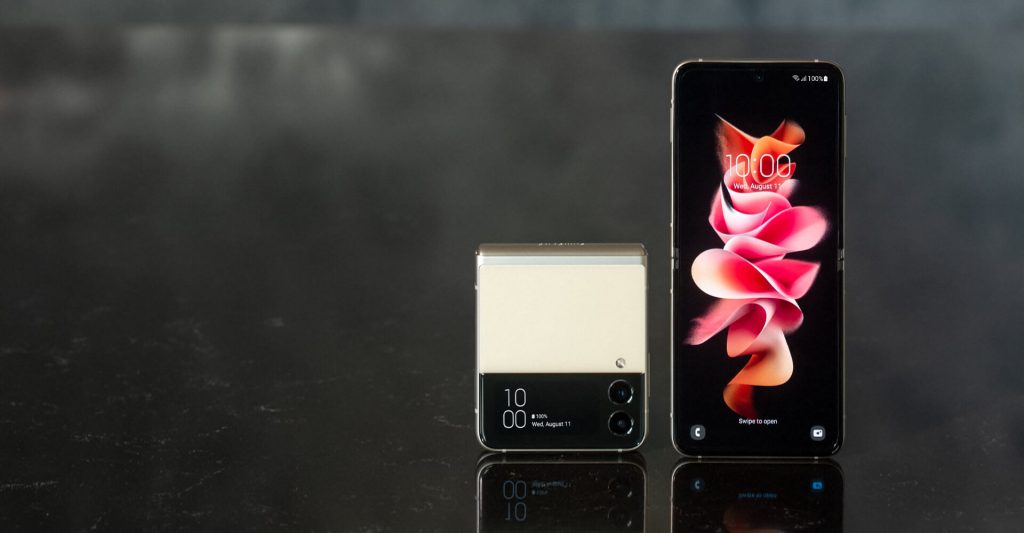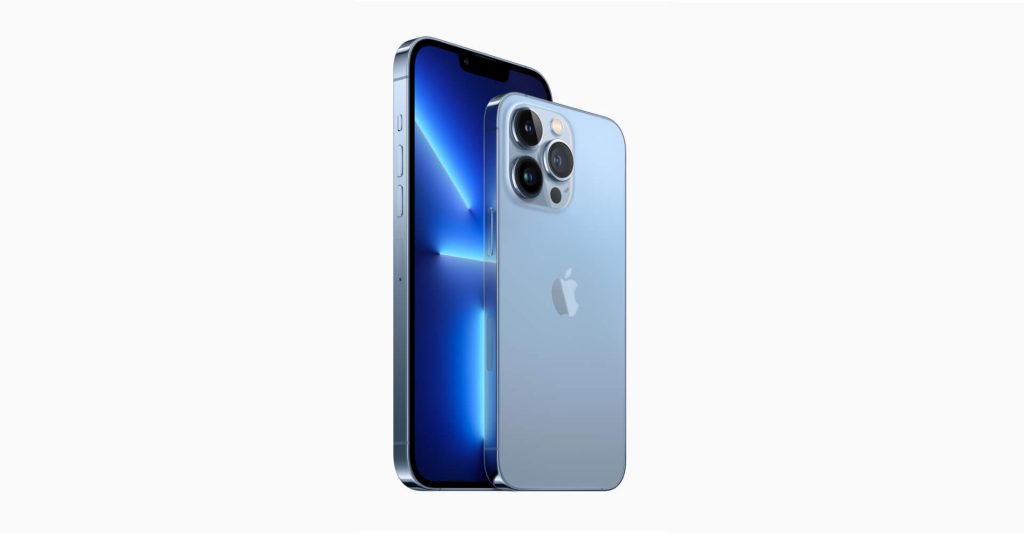Last Updated on December 29, 2021 by Chandrakant Isi
2021 saw the launch of many interesting smartphones. Some of these phones broke the design monotony in the smartphone industry after over a decade. Then, there were other devices that introduced innovations such as fast wireless charging, improved video stabilisation, and futuristic under-display selfie cameras. While these handsets may not top any list in 2021, they definitely set the trend for future devices. The innovations brought to the table by these smartphones will eventually trickle down to mass-market handsets in coming years. So, let’s take a look at the smartphones that dared to be different.
Samsung Galaxy Z Fold 3 – ₹1,49,990
Samsung Galaxy Z Flip 3 – ₹84,990
Xiaomi Mix 4 – $799 (AliExpress)
Apple iPhone 13 series – Starts from ₹69,900
Xiaomi Mi 11 Ultra – ₹69,990
OnePlus 9 Pro – ₹69,990
Samsung Galaxy Z Fold 3 – Folding display

It is impossible to talk innovation without mentioning Samsung’s Galaxy Z Fold 3. This handset is a testament to Samsung’s prowess in industrial design. If making a foldable phone wasn’t challenging enough, the Korean engineers even managed to achieve an IPX8 rating for water resistance. The highlight of this phone is its 7.6-inch flexible OLED screen that opens like a diary to turn this phone into a tablet. This Full HD+ panel has a 120Hz refresh rate and is HDR10+ compatible. In the folded mode, you can get the work done over its 6.2-inch cover display. This OLED panel offers HD+ resolution and a 120Hz refresh rate.
Much like the screens, the phone is loaded with multiple cameras. For starters, the cover screen’s punch-hole accommodates a 10MP selfie camera. Moving around the back, the Fold 3 sports a 12MP primary camera accompanied by 12MP wide and 12MP telephoto sensors. Finally, there’s a 4MP under-display camera in tablet mode. The phone is powered by Qualcomm’s Snapdragon 888 processor fused with 12GB of RAM. The Fold 3 draws power from a 4,400mAh battery with 25W charging support. To take advantage of its unique display setup, Samsung has thoroughly tweaked its One UI 3.1.
Samsung Galaxy Z Flip 3 – Folding display

The Flip 3 is Samsung’s unique take on clamshell design with a twist of the flexible screen. When closed, the Flip 3 is reminiscent of the compact footprint of the Moto RAZR V3. The phone has a tiny 1.9-inch OLED display that enables users to check on messages, call notifications, and control music. Flip it vertically and the handset reveals its 6.7-inch OLED display with Full HD+ resolution. Samsung has tuned this panel for 120Hz variable refresh rate and HDR10+. The screen has a punch-hole that holds a 10MP selfie camera. On the outside, you get a 12MP+12MP dual-camera setup that supports up to 4K 60fps video recording.
The Flip 3 is powered by Qualcomm’s Snapdragon 888 chipset. The phone has 8GB of RAM with 128GB and 256GB internal storage to choose from. The phone covers connectivity features such as 5G, Wi-Fi 6, Bluetooth 5.0, GPS, and NFC. Much like the Fold 3, this handset is rated IPX8 for water resistance. It houses a 3,300mAh battery with 15W charging support. The smartphone ships with Samsung’s One UI 3.1. customisaton based on Android 11.
Xiaomi Mix 4 – Best under-display camera

Xiaomi’s Mix series has always focused on aesthetics and seamless designs. The first Mix handset had a unique ceramic body and incredibly thin bezels around the screen. The Mix 4 takes this seamless design approach to the next level with its under-display selfie camera. It may not be the first phone to implement such technology, but is surely the one that got it right. Unlike other brands where the screen around the camera zone looks patchy, it is quite difficult to spot the under-display camera in Xiaomi’s implementation. To enable the 20MP selfie camera to click pictures through the OLED display, the brand developed a special circuit design, transparent wiring materials, and imaging algorithms.
To complement its futuristic design, the Mix 4 packs in equally impressive hardware. It is powered by the top of line, Snapdragon 888 Plus chipset. The handset features a 6.6-inch Full HD+ 10-bit OLED screen. The panel is tuned for a 120Hz refresh rate and 480Hz touch sampling. The phone sports a 108MP rear camera accompanied by 13MP wide, and 8MP periscope sensors. The 4,500mAh battery supports blazing-fast 120W charging support.
Apple iPhone 13 series – Sensor shift

The iPhone 13 lacks a fresh design, but it is loaded with some incredible hardware. Take, for instance, the sensor-shift stabilization technology that’s mostly found on DSLR and other high-end cameras. Compared to the more common Optical Image Stabilization (OIS), the sensor-shift stabilization archives steady shots by stabilizing the sensor instead of the lens. It is little wonder then, the iPhone 13 series is hard to beat when it comes to recording videos.
In addition to impressive photography features, the iPhone 13 line-up boasts of a powerful A15 Bionic chip. All iPhone 13 models feature OLED screens. If you go for the iPhone 13 Pro or Pro Max, you also get an upgraded 120Hz panel.
Xiaomi Mi 11 Ultra – Secondary display

Xiaomi’s second entry on this list is the Mi 11 Ultra. A flagship phone with a unique secondary screen on its back. It comes in handy to check notifications without turning on the main display. Since this tiny display sits beside the main camera module, you can snap high-quality selfies.
Moving onto the main display, the Mi 11 Ultra sports a 6.81-inch OLED screen with Quad HD+ resolution. For smooth scrolling motion, the panel is tuned for up to a 120HZ refresh rate. With its 1,700 nits of brightness, the display supports HDR 10. At the heart of the device is Qualcomm’s Snapdragon 888 chipset. On the photography front, the Mi 11 Ultra offers a 50MP rear camera along with a 48MP wide-angle lens and 48MP telephoto sensor. The phone can record videos at 8K 24FPS. It has got the selfies covered with a 20MP module. The phone’s 5,000mAH battery supports 67W charging.
OnePlus 9 Pro – 50W Wireless (inductive) Charging

Inductive charging was made popular by the Nokia Lumia 920 in 2012. However, it didn’t really catch up due to its slow charging speeds. To put things in perspective, even the high-end smartphones from Samsung and Apple are limited to 15W wireless charging support. OnePlus tried to speed things up by introducing 50W wireless charging on its widely available OnePlus 9 Pro. By purchasing a compatible Warp Charge 50 accessory, you can ditch the wired chargers.
Coming to the subject of specifications, the OnePlus 9 Pro sports a 6.7-inch Quad HD+ OLED display. It is a 10-bit panel with a 120Hz refresh rate and support for HDR 10+. The handset is powered by Qualcomm’s Snapdragon 888 chip. OnePlus has collaborated with Hasselblad to develop the mobile camera. You get a 48MP main camera, 50MP wide sensor, 8MP telephoto lens, and 2MP depth sensor. The phone delivers an excellent software experience thanks to its Android 11 based OxygenOS 11 customisation.


Discussion about this post